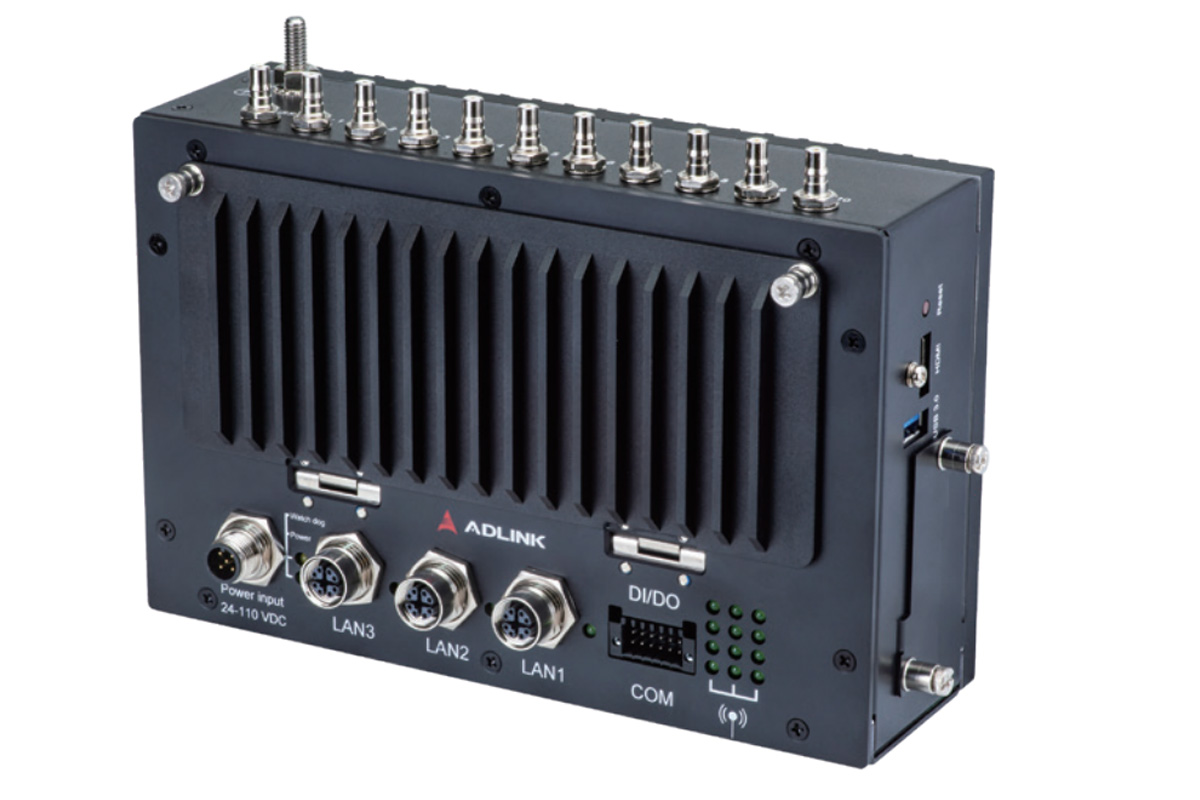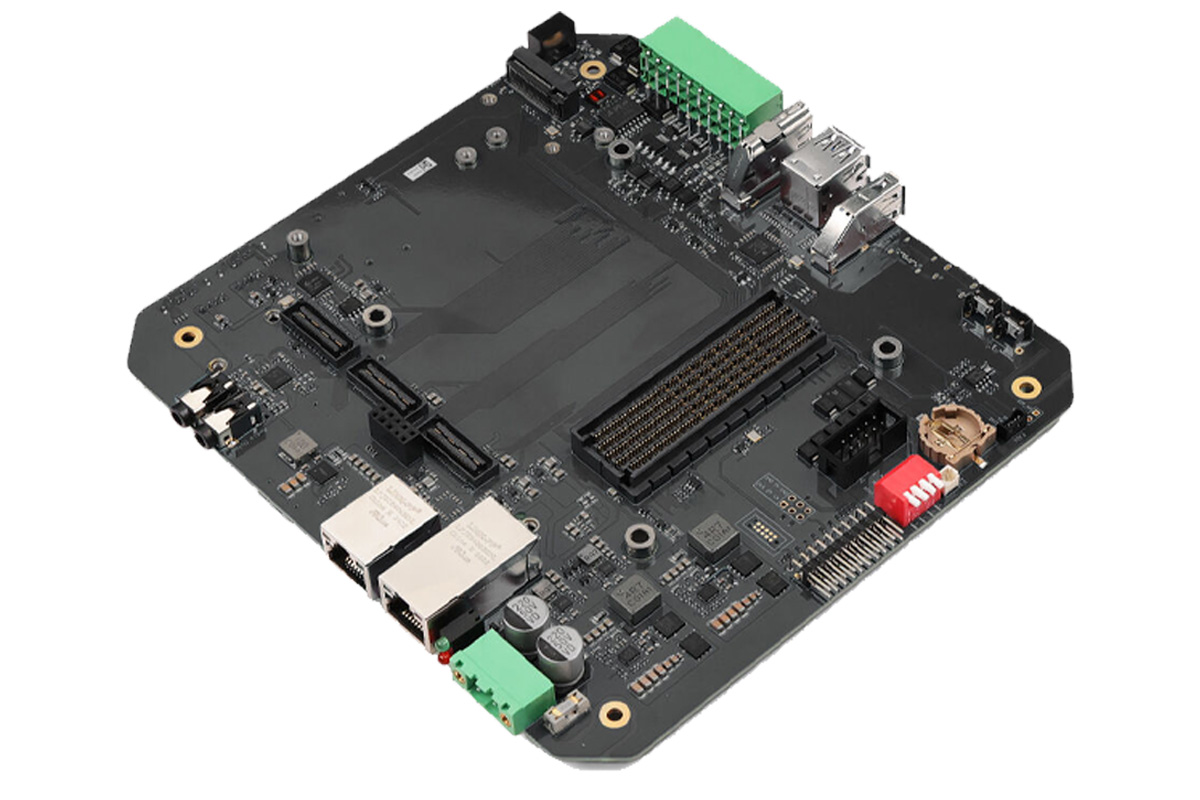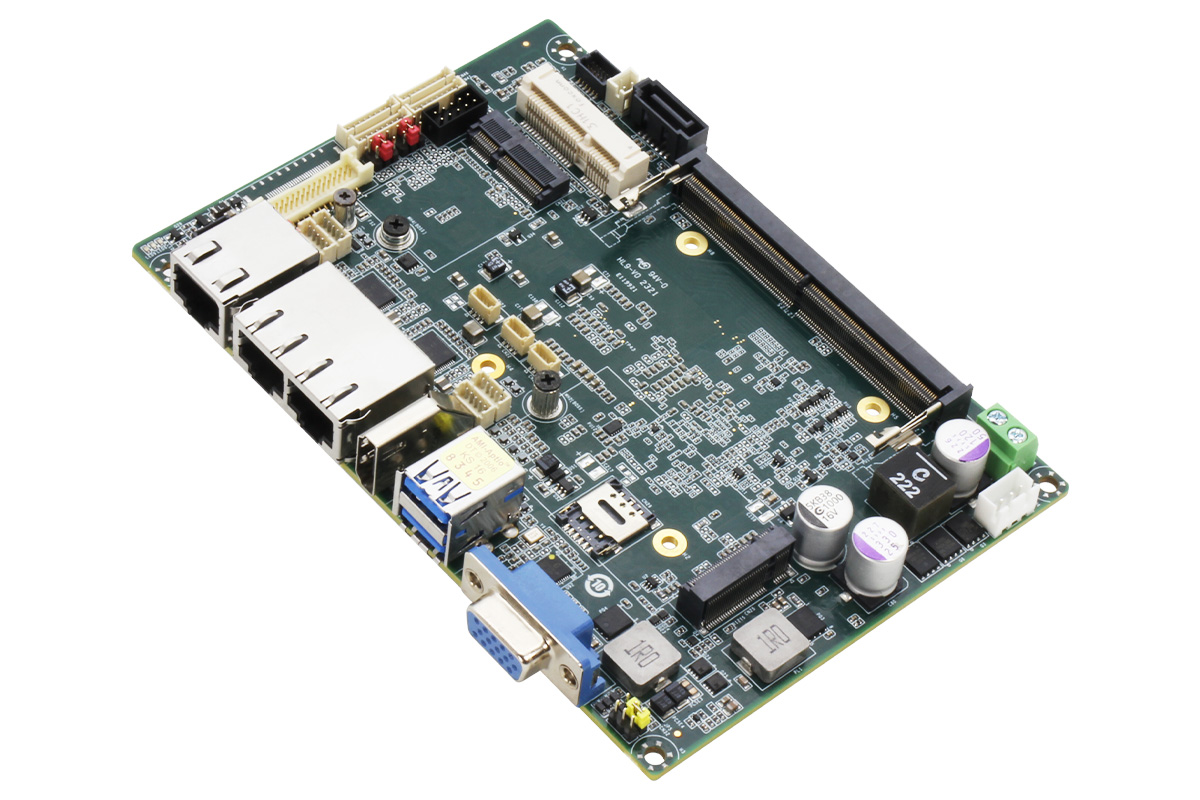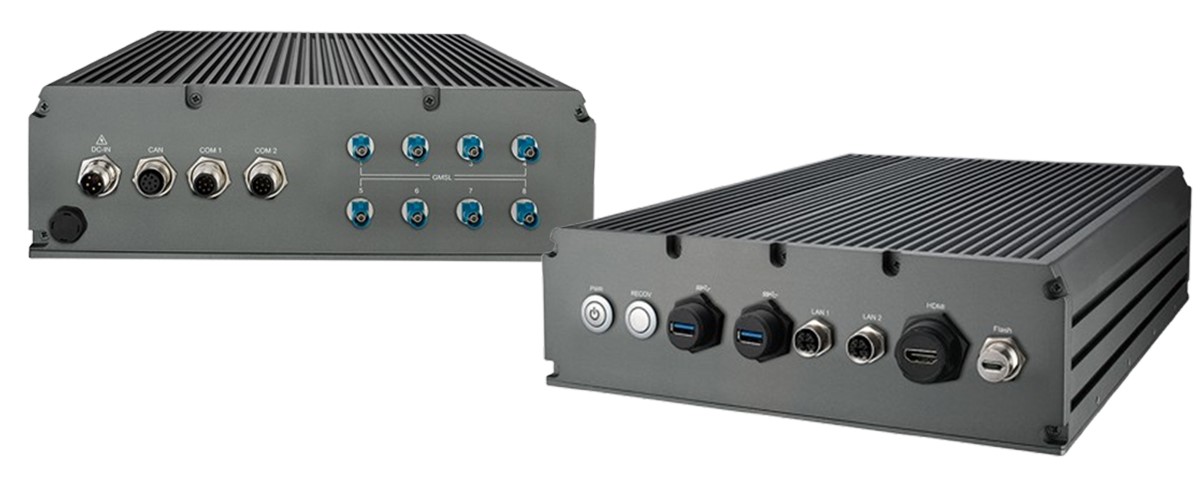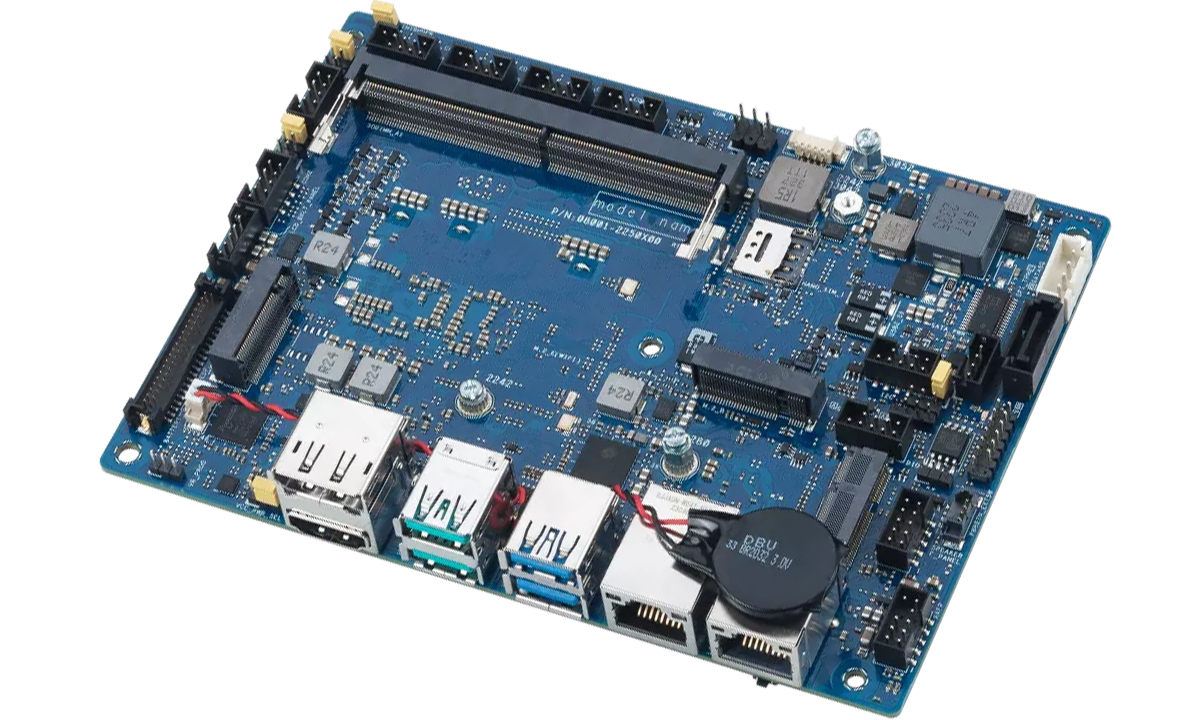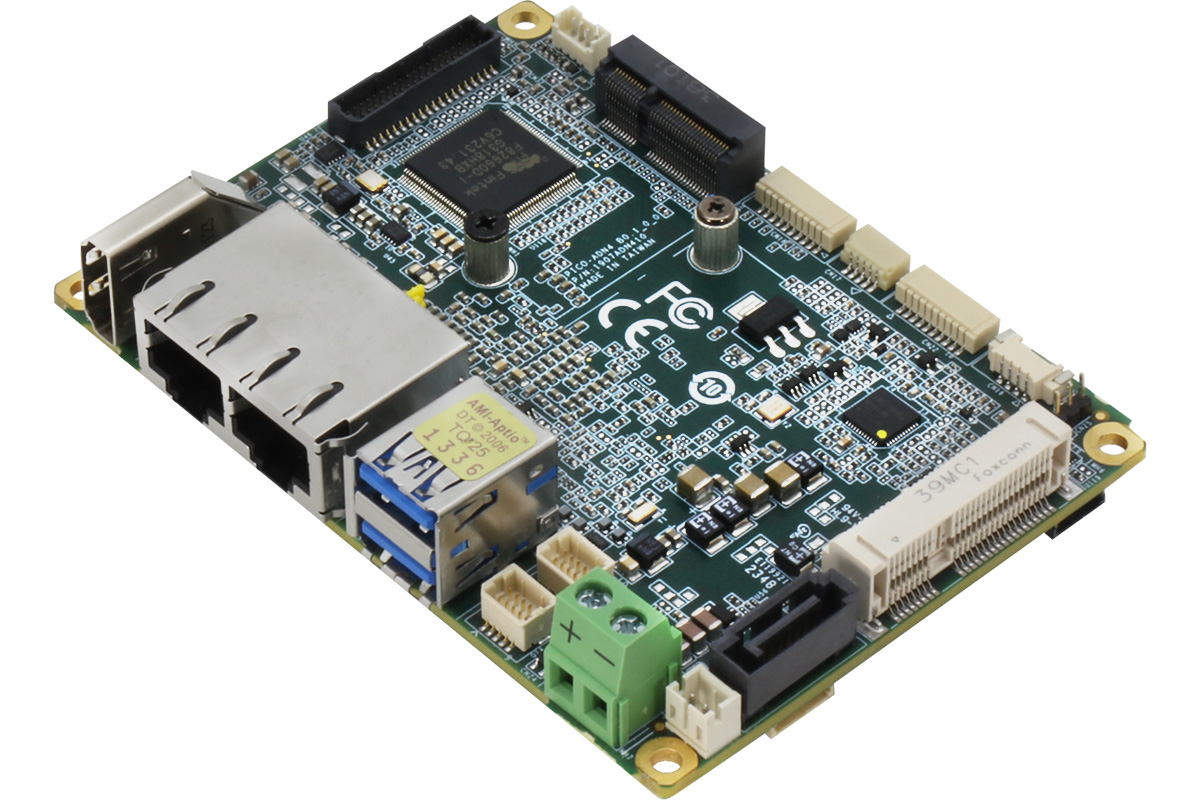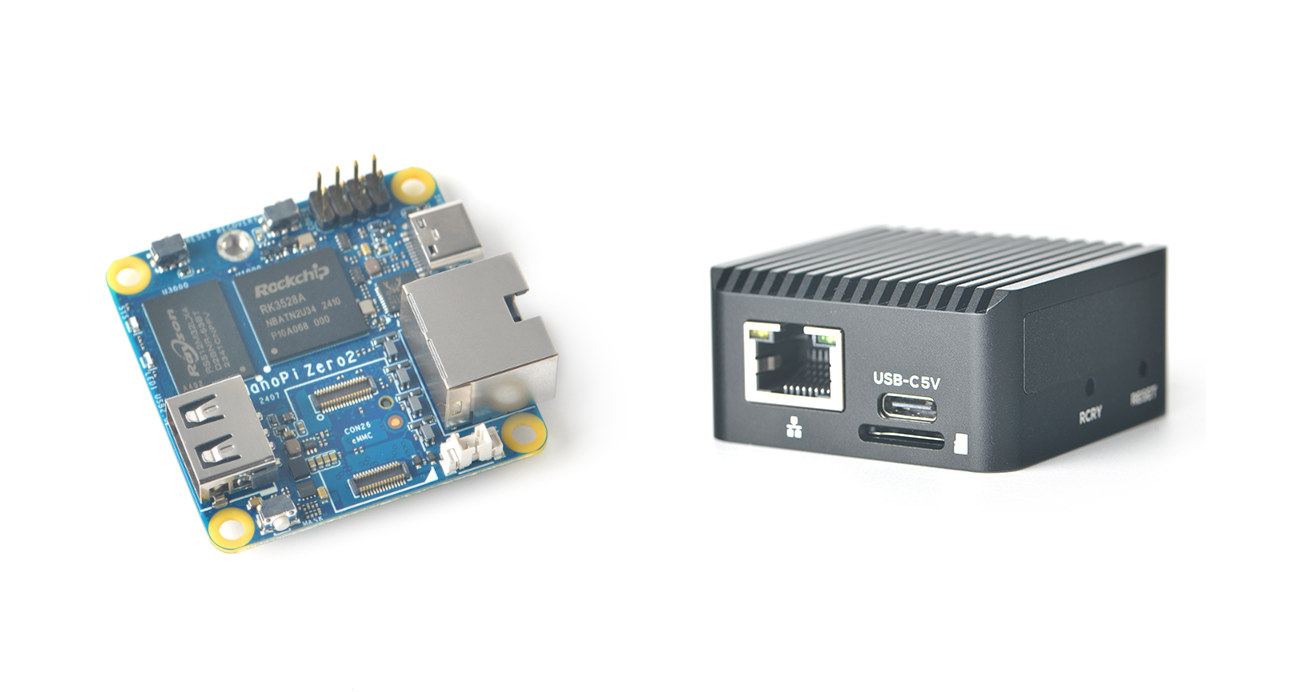The ADLINK AVA-1000 T2G gateway is a rugged, EN50155-compliant T2G (Train-to-Ground) gateway designed for railway and industrial environments. Powered by a choice of NXP i.MX8M Plus Quad Cortex-A53 processor or an Intel Processor N50 Alder Lake-N processor. The i.MX8M Plus model is equipped with up to 8GB LPDDR4 and a 64GB eMMC flash whereas the Alder Lake variant features up to 4GB LPDDR5 memory and a 32GB eMMC flash. In terms of connectivity, the gateway features three M12 GbE ports and supports a wide range of options including 5G, WiFi 6, and GNSS. The AVA-1000 T2G gateway’s fanless design, wide operating temperature range, and 24-110V DC input ensure reliable operation in industrial environments. Additionally, its compliance with EN50155 and other industrial standards makes it ideal for various industrial applications. AVA-1000 T2G gateway specifications System Processor (multiple options) NXP i.MX8M Plus quad-core Cortex-A53 processor @ up to 1.8 GHz with Cortex-M7 […]
reServer Industrial J501 – An NVIDIA Jetson AGX Orin carrier board with 10GbE, 8K video output, GMSL camera support
Seeed Studio’s reServer Industrial J501, a Jetson AGX Orin carrier board designed for building Edge AI systems. With up to 275 TOPS of exceptional AI performance, this carrier board is designed for advanced robotics and edge AI applications for industrial environments. The carrier board features GbE and 10GbE LAN via RJ45 ports, three USB 3.1 ports, an HDMI 2.1 output, and multiple M.2 slots for expansion, including support for wireless connectivity via the M.2 Key B socket. Additionally, it has support for 8K video decoding and up to 8 GMSL cameras via an optional extension board. reServer Industrial J501 Jetson AGX Orin carrier board specification System-on-Module (one or the other) SoM – NVIDIA Jetson AGX Orin 64GB with CPU – 12-core Arm Cortex-A78AE v8.2 64-bit processor with 3MB L2 + 6MB L3 cache GPU / AI accelerators NVIDIA Ampere architecture with 2048 NVIDIA CUDA cores and 64 Tensor Cores @ […]
D-Robotics RDK X3 Development Board features Sunrise X3 quad-core Arm Cortex-A53 SoC with a 5TOPS “Bernoulli” BPU
The D-Robotics RDK X3 development board is designed for edge AI applications and features a Sunrise X3 quad-core Arm Cortex-A53 processor running at 1.5GHz with a dual-core BPU (Brain Processing Unit) with 5 TOPS of edge inference capability. The board includes a 40-pin GPIO interface, ensuring compatibility with Raspberry Pi 4B accessories for versatile project development. The RDK X3 offers 2GB or 4GB of LPDDR4 RAM and includes a MicroSD card slot for storage expansion. Designed for real-time applications like robot control and intelligent monitoring, its 5 TOPS inference capability makes it ideal for computer vision workloads such as object detection, body segmentation, scene parsing, etc… Previously, we covered the Horizon X3 AI development board, which uses the same Horizon Robotics Sunrise X3 processor. We’ve also written about several other edge AI development boards, including the Synaptics Astra Platform SL1680, SagireEdge AI 600, and MYiR Tech’s MYC-LR3568. Feel free to […]
AAEON GENE-ASL6 – A 3.5-inch industrial Amston Lake SBC with triple display interfaces and triple 2.5GbE
AAEON GENE-ASL6 is an Intel Atom x7000RE-series Amston Lake powered 3.5-inch single board computer (SBC) featuring three 2.5GbE RJ45 ports and three independent display outputs via HDMI, LVDS, and VGA. The GENE-ASL6 can be configured with up to 16GB of LPDDR5 memory and supports a variety of storage options including SATA, mSATA, and M.2 NVMe SSD options. There is also an M.2 2230 E-Key slot for Wi-Fi and Bluetooth connectivity and the other M.2 3052 B-Key slot can be used for storage or to connect 4G or 5G modules. Other than that, this board features a variety of connectivity options including USB 3.2 Gen 2 ports, serial ports, GPIO, SMBus/I2C, optional audio header, and much more. AAEON GENE-ASL6 specifications: Amston Lake SoC (one or the other) Intel Atom x7213RE dual-core processor @ 2.0 to 3.4 GHz with 6MB cache, 16EU Intel UHD graphics; 9W TDP Intel Atom x7433RE quad-core processor @ […]
Vecow RAC-1000 rugged Edge AI systems feature NVIDIA Jetson AGX Orin, waterproof ports, GMSL2 camera connectors
Vecow’s RAC-1000 series Edge AI systems are powered by NVIDIA Jetson AGX Orin 32GB or 64GB system-on-modules, offering up to 275 TOPS of AI performance. These systems are energy-efficient and come with rugged I/O options and an IP67-rated enclosure, making them suitable for AI and robotics applications such as automated agricultural machinery, construction automation, and mobile robotics in extreme outdoor conditions. The series includes two models: the RAC-1000, which supports 8 GMSL2 cameras through FAKRA-Z connectors for autonomous mobile robots, agricultural vehicles, and ADAS; and the RAC-1100, which features 6 GigE LAN ports with 4 PoE+ for vision AI applications. Both models are built for industrial environments and support various AI-driven tasks. As you may know, we’ve previously covered several Vecow AI computing systems, including EAC-5000, EVS-3000, TGS-1000 Series, SPC-9000 fanless embedded system, ECX-3200, and EPBC-1000. Feel free to explore these options if you’re interested. The Vecow RAC-1000 series specifications: […]
ASUS X7433RE-IM-A 3.5-Inch motherboard features Intel Atom X7433RE Amston Lake SoC, dual Ethernet, three display interfaces
ASUS has launched the X7433RE-IM-A, a 3.5-inch industrial motherboard powered by an Intel Atom X7433RE Amston Lake SoC. The processor supports Intel Deep Learning Boost (DL Boost) and Intel AVX2 SIMD instructions to enhance AI processing and accelerate workloads at the IoT edge. The X7433RE-IM-A single-board computer supports up to 16GB of DDR5 4800MHz In-Band ECC memory via a SO-DIMM slot. The Intel Atom X7433RE processor, with integrated Intel UHD Graphics, supports up to three 4K displays through HDMI 2.0, DisplayPort 1.4, and LVDS/eDP 1.2. For storage, the board includes a SATA 3.0 interface and networking is implemented through two Ethernet controllers – Intel i210IT and i226IT (2.5GbE) – with WOL/PXE support. Previously, we covered the ASRock Industrial SBC-262M-WT, another Intel Atom X7433RE Amston Lake-based 3.5-inch motherboard. We also wrote about other 3.5-inch boards like the ECS ADLN-IE1S, Jetway MF32, ECS RK3568-IS, MSI MS-98M3, and several others. You can check […]
AAEON PICO-ASL4 industrial Pico-ITX SBC ships with Intel Atom x7000RE, up to 16GB DDR5, 2.5GbE LAN
AAEON PICO-ASL4 is a fanless, latency-sensitive Pico-ITX single board computer (SBC) built around the Intel Atom x7000RE-series “Amston Lake” SoCs and configurable with up to 16GB of DDR5 memory. The SBC supports dual display outputs via HDMI and LVDS/eDP and features four serial ports: two RS232/422/485 and two RS232. For networking, it provides dual Ethernet connectivity with Intel i226 2.5GbE and Realtek RTL8111H 1GbE controllers, both supporting TSN and TCN. Additionally, it offers a variety of expansion options, including a full-sized mSATA/mPCIe slot and an M.2 2230 E-Key socket for WiFi and Bluetooth. For further connectivity, there are four USB 2.0 ports, two USB 3.2 Gen 2 ports, as well as GPIO and SMBus/I2C headers. AAEON PICO-ASL4 (Rev.B) specifications SoC – Intel Amston Lake (one or the other) Intel Atom x7433RE, 4 cores, 1.5GHz, 9W TDP Intel Atom x7835RE, 8 cores, 1.3GHz, 12W TDP System Memory – Up to 16GB DDR5 […]
NanoPi Zero2 is a tiny headless Arm Linux computer with Gigabit Ethernet, a USB port, and an M.2 Key-E socket for WiFi
FriendlyELEC NanoPi Zero2 is one of the world’s smallest Arm Linux computers with the 45x45mm board featuring a Rockchip RK3528A quad-core Cortex-A53 processor, up to 2GB RAM, microSD and eMMC flash module sockets for storage, a Gigabit Ethernet RJ45 jack, an M.2 socket for WiFi, a USB Type-A port, and a 30-pin GPIO FPC connector for expansion. When I went to find more information about the earlier NanoPi Zero, I quickly realized… it did not exist, and the closest thing we have is the ZeroPi released in 2019 with an Allwinner H3 Cortex-A7 processor and an even smaller 40x40mm form factor. The NanoPi Zero2 comes with a 64-bit processor, more memory, and optional support for an M.2 WiFi module among other improvements. It’s designed for headless applications since there’s no video output/display interface. NanoPi Zero2 specifications: SoC – Rockchip RK3528A CPU – Quad-core ARM Cortex-A53 @ 2.0 GHz GPU – […]


